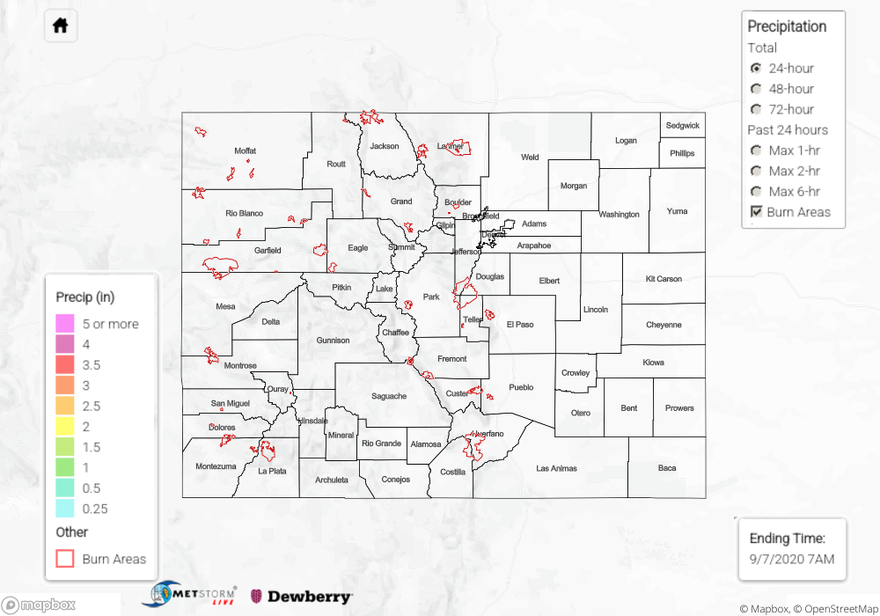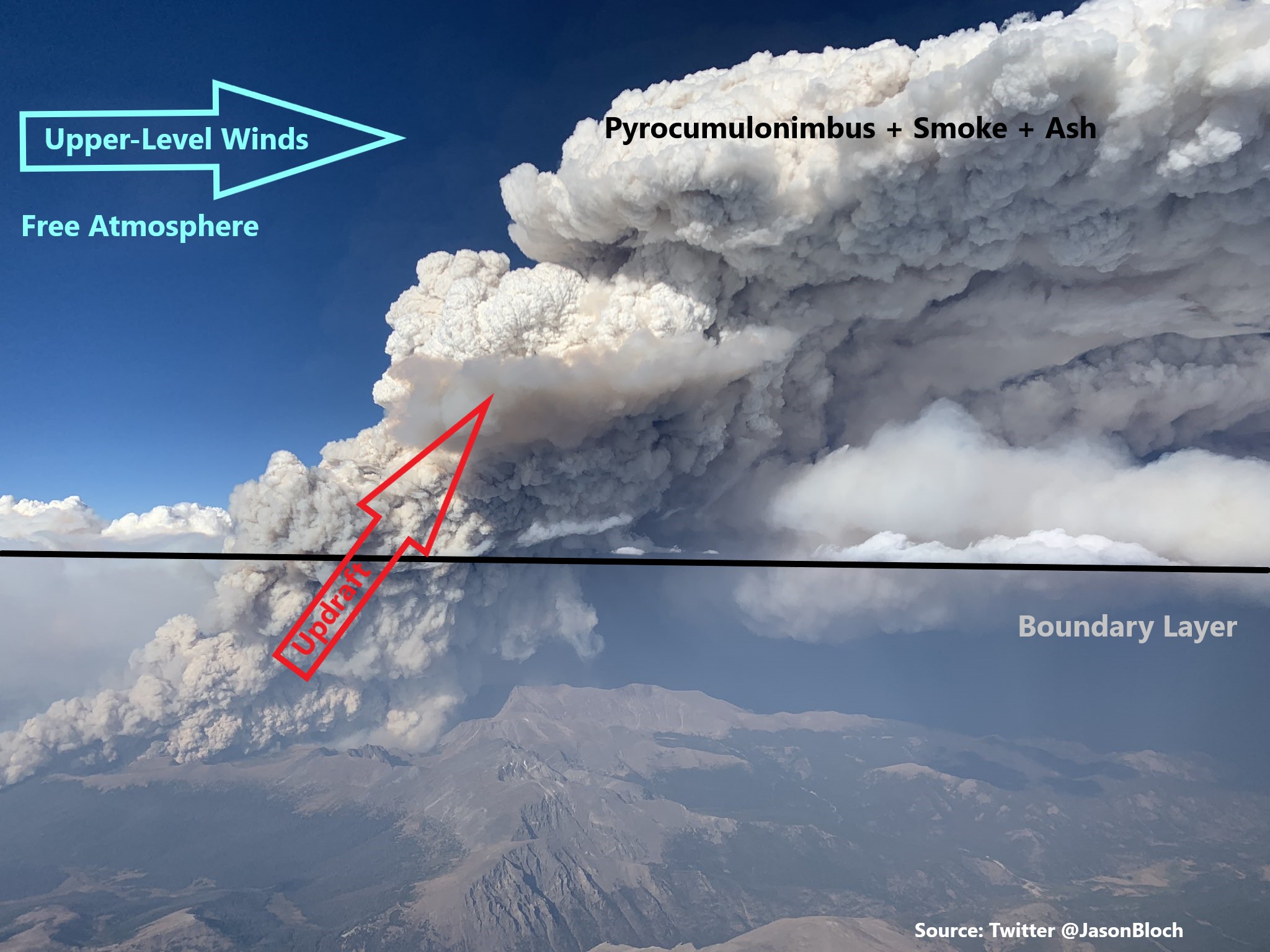Issue Date: Monday, September 7th, 2020
Issue Time: 10:55AM MDT
Summary:
Yesterday felt quite apocalyptic for the Urban Corridor as thick smoke from the rapidly expanding Cameron Peak wildfire covered the area under northwest flow. This smoke kept temperatures down a few degrees, but Denver still tied the record high temperature of 97F for the day by 12:35PM MDT (just before thick smoke moved over the area). Reports (and pictures) of ash falling from the sky were all over social media. In western Colorado, Grand Junction added another record high temperature of 99F, breaking last year’s record of 97F. In the Southeast Plains, less smoke and no cloud cover allowed La Junta to reach a preliminary new all-time September high temperature for the state of Colorado at 108F. This adds to the already record-breaking heat that Colorado has been experiencing this summer. Luckily, rapid changes are in store this week.
The image below is fascinating and shows the power of the Cameron Peak wildfire, which grew by almost 25,000 acres yesterday and overnight (see stats below). The picture was taken around 5:30PM MDT by Jason Bloch and was shared around social media yesterday afternoon. You can see very well the boundary (black line) between planetary boundary layer (lower atmosphere) and the free atmosphere (upper atmosphere). The boundary layer is filled with smoke and haze, which is the air we are breathing at the surface, whereas the free atmosphere is relatively clean. The Cameron Peak wildfire is burning so rapidly and so hot that it is creating a strong updraft (red on image below) that penetrates through the boundary layer and into the free atmosphere, similar to what a convective thunderstorm would do. In fact, the updraft created its own “pyrocumulonimbus” cloud over the fire due to the rapidly rising air. This cloud did not produce rainfall in this case due to the drier air in place, but ash did fall out of this cloud well downwind over the Denver area. The transport of smoke high up into the free atmosphere is how smoke can be transported thousands of miles downstream. When this smoke gets trapped in the boundary layer during smoldering or less intense fire activity, it acts to drastically drop air quality. Air quality still dropped to Very Unhealthy levels in Longmont yesterday due to the smoke trapped in the boundary layer. The smoke that made it up into the free atmosphere created beautiful sunsets for Kansas and Oklahoma.
Colorado large wildfire update (as of 10:50AM on InciWeb):
Cameron Peak in the Medicine Bow Mountains: 59,051 acres; 4% contained (explosive increase in size, drop in containment)
Williams Fork in the Arapaho National Forest: 12,132 acres; 10% contained
Grizzly Creek in Glenwood Canyon: 32,464 acres; 83% contained
Pine Gulch north of Grand Junction: 139,007 acres; 87% contained
For rain estimates in your area over the last 24 to 72 hours, check out our State Precipitation Map below.
Click Here For Map Overview

